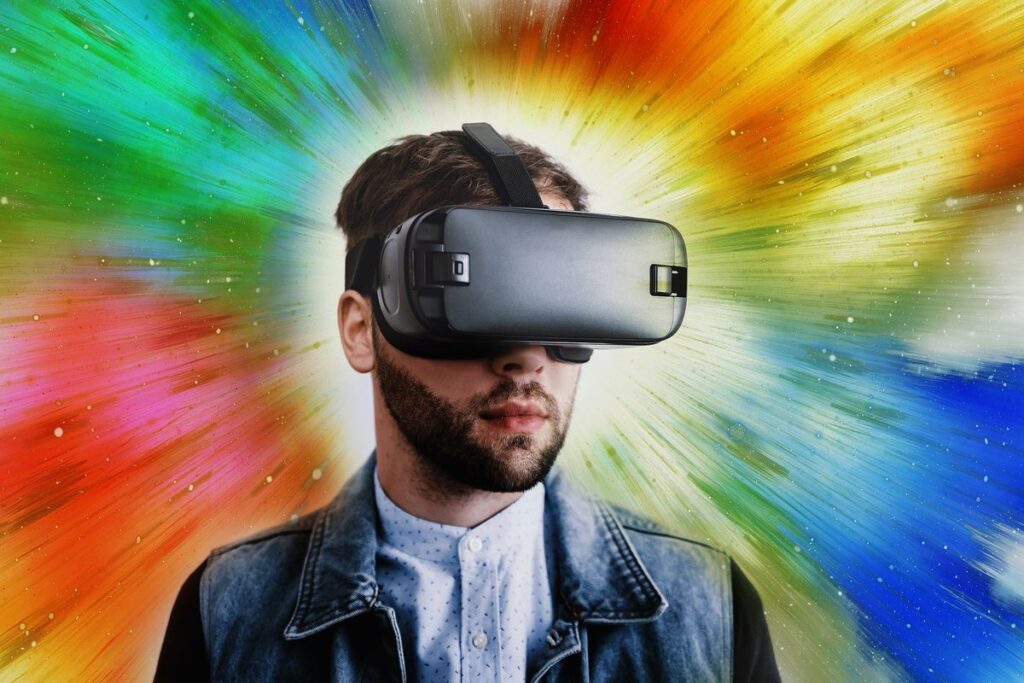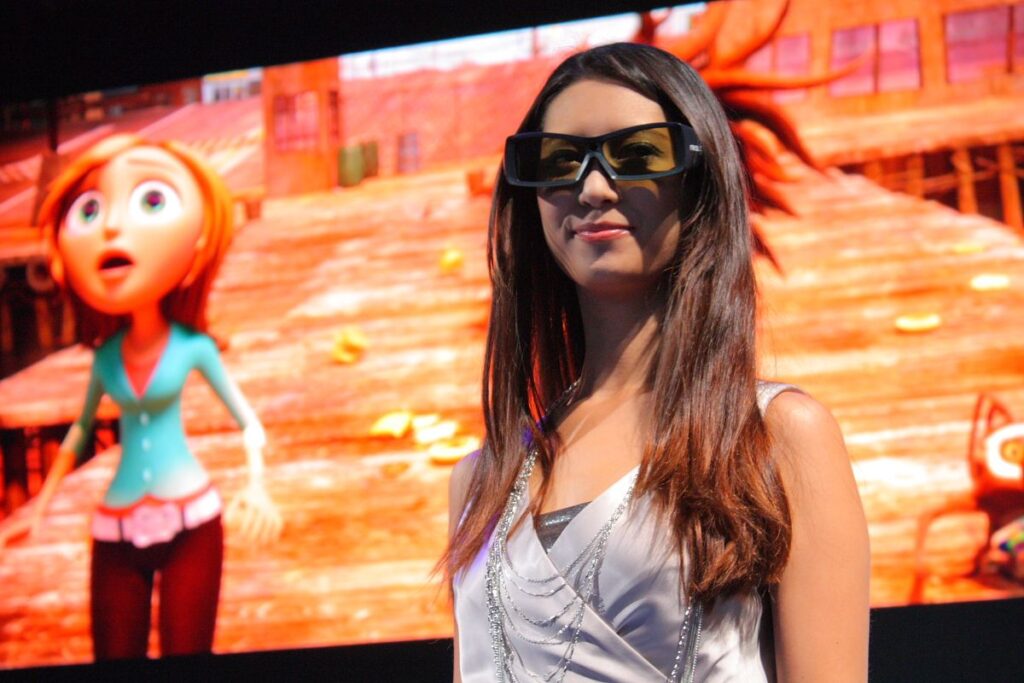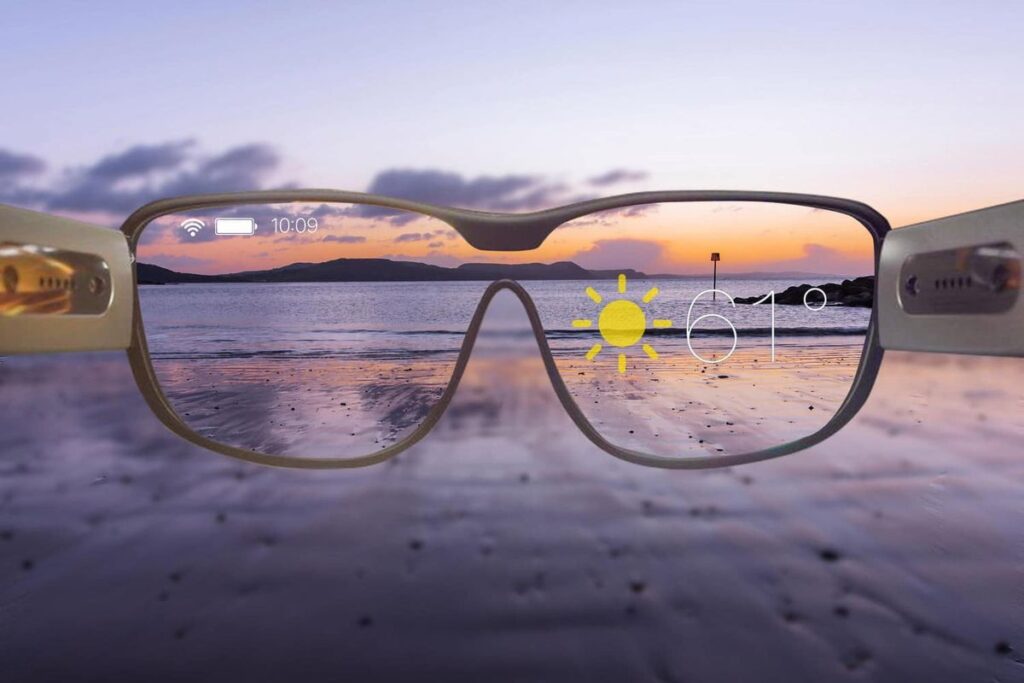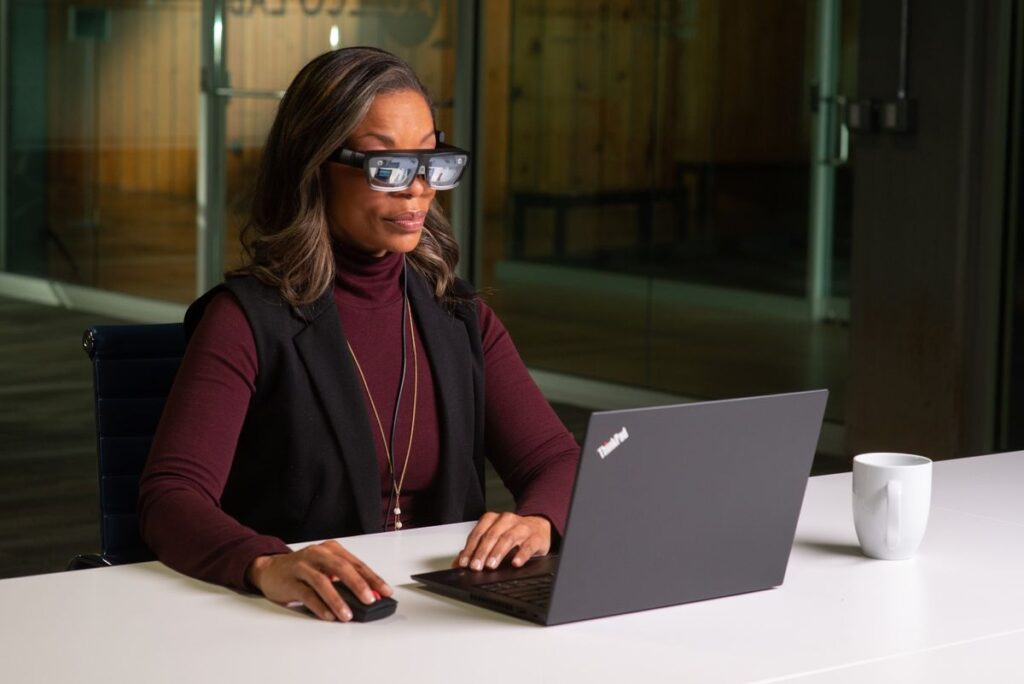In the crosshairs of innovation, the eyewear industry is witnessing a transformative clash between traditional in-store retail and the burgeoning online experience. This pivotal shift, driven by the integration of 3D and AR technologies, is crafting a new vision for consumer interactions. As we delve into the key innovations shaping the eyewear industry, we’ll uncover the digital revolution in retail, the push for sustainability, the evolution of eyewear design and materials, the emerging horizons of eyewear technology, and the role of AI in personalization. These developments are not just altering the landscape of eyewear but are setting the stage for a future where technology and tradition converge to enhance the consumer experience.
Key Takeaways
- The integration of 3D and AR technologies is revolutionizing the eyewear retail experience, merging the convenience of online shopping with the personalized service of in-store visits.
- Sustainability and ethical manufacturing are becoming increasingly important in the eyewear industry, with consumer demand shifting towards eco-friendly materials and socially responsible practices.
- Technological advancements in materials and design, such as the transition from plastic to titanium frames and improvements in lens technology, are enhancing comfort and functionality.
- Emerging technologies like AR glasses and biometric integration are expanding the boundaries of eyewear, introducing new applications and markets.
- Artificial intelligence is playing a significant role in personalizing the eyewear experience, from precision in lens color selection to customized fit and style recommendations.
The Digital Revolution in Eyewear Retail

The Rise of 3D and AR Technologies
The integration of 3D and AR technologies is revolutionizing the eyewear industry, offering a seamless bridge between the physical and digital realms. Virtual Try-On (VTO) solutions are at the forefront of this transformation, allowing customers to experience the fit and style of glasses with remarkable accuracy from their own devices.
- The immersive potential of virtual showrooms
- Precision of virtual try-on solutions
- Enhanced customer engagement and satisfaction
The adoption of these technologies not only enhances the customer journey but redefines it, merging the convenience of online shopping with the personal touch of in-store service.
As AR glasses continue to advance, they are expected to become a staple in the tech industry, with a growing demand that underscores their impact. The eyewear industry is being revolutionized by AR glasses, fitness tracking, and voice commands, while advanced materials and customization continue to drive innovation.
Blending Online Convenience with In-Store Service
The eyewear industry is witnessing a seamless integration of online convenience with traditional in-store service. Innovative eyewear eCommerce solutions are transforming the optical industry, offering features such as virtual try-ons and sustainable manufacturing processes. These advancements are enhancing customer experience and accessibility, as seen with platforms like Lenskart & Ray-Ban.
The synergy between digital and physical retail is evident in practices like Click-and-Collect services, which drive both online engagement and in-store foot traffic. Real-time inventory management ensures that customers have accurate information, reflecting the in-store inventory on online platforms. Moreover, leveraging physical stores for online returns has become a key strategy in reducing friction and enhancing customer satisfaction.
The evolution of the in-store experience is not about replacing the traditional; it’s about enriching it with technology to provide a more personalized and engaging service.
The table below compares the convenience of eCommerce with the traditional in-store retail experience in the optics industry:
By embracing these innovations, eyewear retailers are setting new standards in customer engagement, merging the best of both worlds to cater to the modern consumer.
Setting New Standards in Customer Engagement
In the dynamic landscape of eyewear retail, Lenskart is revolutionizing the shopping experience with cutting-edge technology and a focus on sustainability. The brand’s commitment to innovation is not just about offering products but about fostering a deep connection with consumers.
The key to success in today’s market is personalization. Customers demand unique touchpoints and experiences tailored to their preferences. By leveraging data and embracing omnichannel strategies, retailers can create a more engaging and memorable journey for each individual.
Here are some ways to enhance customer engagement:
- Embrace omnichannel experiences
- Deep dive into data for personalized recommendations
- Create limited edition collections for exclusivity
- Engage through social media and recognize user-generated content
The essence of setting new standards in customer engagement lies in the subtleties of interaction and the emotional resonance that turns a casual browser into a brand evangelist.
Sustainability and Ethical Practices in Eyewear

Eco-Friendly Materials and Production
The eyewear industry is embracing a greener future by innovating with eco-friendly materials and production methods. Sustainable practices are becoming a cornerstone for companies aiming to reduce their environmental footprint. New materials such as MycoBond, a flame-resistant alternative to Styrofoam, and nanocrystalline cellulose, derived from wood fiber, are paving the way for higher-performance and sustainable eyewear products.
The shift towards sustainability is not just a trend but a response to increasing consumer demand and impending regulatory changes. As the industry evolves, so does the commitment to ethical and eco-conscious production.
Here are some of the key sustainable materials currently being explored in the eyewear industry:
- Mycelium fungus-based materials for flame resistance
- Thermoplastics made from starch in home settings
- Surgical-grade plastics derived from silk
- Renewable nanocrystalline cellulose for enhanced durability
As regulations evolve, such as those under the EU Strategy for Sustainable Textiles, the relative costs of local production are likely to decrease, further incentivizing the shift towards eco-friendly practices. This movement is not only about reducing environmental impact but also about increasing local employment and offering consumers customizable options that align with their values.
The Demand for Ethical Manufacturing
As the eyewear industry evolves with the integration of fashion and technology, ethical manufacturing has become a cornerstone for brands aiming to align with modern values. The convergence of stylish frames with advanced features, such as bone conduction technology, is not just a trend but a reflection of consumer expectations for responsible production practices.
In response to these demands, companies are re-evaluating their supply chains, ensuring compliance with stringent audits, and adopting ethical product designs. The push towards sustainability is further amplified by the potential regulatory changes in waste management and greenwashing within the EU, and the new ESG approaches by the UK and the Biden administration.
The shift towards ethical manufacturing is not merely a compliance measure but a strategic move to resonate with consumers who prioritize sustainability and transparency in their purchases.
The table below outlines the emerging models in manufacturing that cater to the demand for personalization and smart product integration:
This transformation in manufacturing is not just about creating physical products but about remapping business models to capture value in a market where the lines between consumer and creator are increasingly blurred.
Consumer Preferences Shifting the Market
The eyewear industry is witnessing a significant shift as consumer preferences move towards more personalized and customized products. This trend is fragmenting the market into numerous niches, each representing unique opportunities for manufacturers. The ability to meet these specific consumer needs is becoming a competitive advantage.
- Consumers are increasingly expecting to get exactly what they want, rather than settling for mass-produced items.
- Technological advances in modularity and smart devices are transforming eyewear into more than just vision aids.
- Materials science advancements are enabling the creation of intricate and advanced eyewear tailored to individual preferences.
The rise of niche markets is a testament to the changing nature of consumer demand, where personalization and customization are not just desired but expected.
Manufacturers are now focusing on economies of scope to deliver value, leveraging technology to produce in smaller volumes but with greater variety. This approach is becoming cost-effective and is reshaping the traditional retail landscape, where the power once held by geographic spread and physical shelf space is diminishing.
Technological Evolution of Eyewear Design and Materials

From Plastic Frames to Titanium: A Material Journey
The eyewear industry has witnessed a remarkable transformation in the materials used for frames. Plastic frames, once a revolutionary development, provided durability and design versatility, but the quest for comfort and style has led to the adoption of metals like titanium. This lightweight yet strong material has redefined the standards for premium eyewear, offering unparalleled comfort for extended wear.
The evolution of frame materials is not just a tale of fashion and comfort, but also one of technological innovation and scientific progress. The use of advanced materials such as titanium represents a significant leap forward from the days of bulky and heavy spectacles.
The following table highlights the transition from traditional to advanced materials in eyewear frames:
Materials science continues to push the boundaries, with 3D printing technology paving the way for sustainable and custom-fit eyewear. The integration of materials like carbon fiber and Kevlar through advanced manufacturing techniques is creating frames that are not only light and durable but also tailored to the individual’s needs and preferences.
Innovations in Lens Technology
The relentless pursuit of better vision and comfort has led to significant innovations in lens technology. Advancements have not only improved the visual experience but also added functional versatility to eyewear. Anti-reflective coatings are now standard, offering enhanced visual clarity and reducing eye strain in various lighting conditions. Photochromic lenses, which adapt to changing light conditions, exemplify the adaptability of modern eyewear.
The precision in lens manufacturing has seen a remarkable evolution. The introduction of grinding machines in the 19th century allowed for the accurate shaping of lenses, a leap forward in optical quality. This democratized access to eyewear, making it an essential tool for a broader audience.
Technological advancements have also revolutionized the materials used in eyewear. The mid-20th century saw the introduction of plastic frames, which brought about a new era of durability and design diversity. The development of lightweight materials like titanium further enhanced the comfort of glasses for prolonged wear.
The evolution of eyeglass technology integrates fashion and function, driven by digital lifestyles. Innovations in materials, customization, and smart eyewear reshape consumer preferences and market trends.
The Impact of Lightweight and Durable Materials
The evolution of materials in eyewear has been pivotal in transforming glasses from mere vision aids to modern fashion accessories that integrate cutting-edge technology. Materials science has been instrumental in this shift, leading to the creation of frames that are not only lighter and more comfortable but also significantly more durable than their predecessors.
In the realm of eyewear, the benefits of these advancements are manifold:
- Enhanced comfort for extended wear
- Improved resistance to wear and tear
- A reduction in environmental impact through sustainable production methods
- The ability to offer customized, tailor-made solutions
The intersection of fashion, technology, and health is shaping a dynamic future for the eyewear industry, with materials science at the forefront of this transformation.
As we look to the future, the implications of these material innovations are vast. They not only lower the barriers to entry for new players in the eyewear market but also promise to deliver a more personalized and sustainable consumer experience. The ongoing research and development in materials science will undoubtedly continue to revolutionize the eyewear industry, making it an exciting time for both consumers and manufacturers alike.
The Future Horizons of Eyewear Technology

Augmented Reality and Virtual Showrooms
The integration of augmented reality (AR) and virtual showrooms is transforming the eyewear industry, offering a seamless blend of online convenience and immersive in-store experiences. Customers can now explore and interact with a vast array of eyewear options from the comfort of their homes, thanks to the innovative use of 3D modeling and AR technologies.
The future of eyewear retail lies in the ability to provide a personalized and engaging shopping experience, without the limitations of physical location.
This digital evolution is not only redefining the customer journey but also setting new benchmarks in retail innovation. Virtual Try-On (VTO) solutions are at the forefront, allowing consumers to see themselves wearing glasses with astonishing realism, thus bridging the gap between the digital and physical realms.
- Augmented reality enhances the ‘try before you buy’ experience.
- Virtual showrooms offer an extensive selection without spatial constraints.
- 3D visualization and AR make online shopping more accessible and convenient.
Biometric Integration in Eyewear
The eyewear industry is on the cusp of a transformative leap with the integration of biometric sensors into AR glasses. These sensors are not just futuristic add-ons; they serve a practical purpose by monitoring vital signs such as heart rate and body temperature, seamlessly blending health monitoring with daily wear. This innovation is a testament to the industry’s commitment to enhancing user experience and well-being.
The fusion of biometric technology with eyewear is a significant stride towards personalized healthcare. Users can now access health-related data on the go, making it easier to stay informed about their physical state without interrupting their daily routine.
The practical applications of biometric integration are vast, addressing consumer concerns that have long hindered online eyewear purchases. With AI-driven platforms, the experience is akin to an in-store consultation, offering personalized recommendations that align with individual preferences and facial features. Here’s how biometric integration is reshaping the eyewear experience:
- Personalized Health Tracking: Continuous monitoring of health metrics.
- Enhanced User Experience: Recommendations for fit, style, and color tailored to the user.
- Convenience and Accessibility: Health data available anytime, enhancing the value of eyewear beyond vision correction.
As we look to the future, the horizon is bright with possibilities. Augmented reality will further enrich the functionality of smart glasses, while biometric sensors will open new avenues for personalized health and well-being.
The Expanding Market of AR Glasses
The trajectory of AR glasses is on a sharp incline, with their market expanding as they become more than just a novel gadget. The integration of AR glasses into various sectors is not just a trend, but a transformative movement. These devices are evolving from niche products into essential tools across industries, from gaming to healthcare, enhancing user experiences in unprecedented ways.
- Consumer Demand: Increasing as AR becomes part of daily life.
- Device Integration: Seamless connectivity with smartphones and other smart devices.
- Industry Applications: Broadening from entertainment to medical fields.
The potential of AR glasses lies in their ability to overlay digital information onto the real world, creating an immersive interface that could redefine human interaction with technology.
As the technology matures, the competition among suppliers intensifies, pushing the envelope of what AR glasses can achieve. The future promises even more advanced features, with the potential to revolutionize productivity and communication. The market’s appetite for innovation ensures that AR glasses will continue to be a focal point of technological evolution.
AI and Personalization in the Eyewear Experience

AI in Lens Color Selection and Precision
The advent of AI in lens color selection has marked a significant milestone in the eyewear industry. By harnessing the power of artificial intelligence, consumers are now able to bypass the trial-and-error process traditionally associated with choosing the right lens color. AI-driven platforms offer personalized recommendations that align with individual preferences and facial features, akin to a professional in-store stylist’s advice.
The integration of AI not only enhances the customer experience but also serves as a stepping stone for future innovations in eyewear technology.
This technological leap forward is not just about aesthetics; it addresses practical concerns such as fit, style, and glare reduction. For instance, anti-reflective coatings and photochromic lenses have become more sophisticated with AI’s precision, ensuring optimal visual clarity and comfort. As we look towards the horizon, AI’s role in the development of AR glasses is poised to expand, promising even more personalized and context-specific user experiences.
Customization and Consumer Preferences
In the eyewear industry, the shift towards personalization and customization is not just a trend, but a reflection of consumer demand for products that cater to their unique preferences and needs. The digital age has democratized these options, making them accessible to a broader audience beyond the traditionally wealthy niche.
Consumers are no longer passive recipients; they are active participants in the creation and conceptualization of their eyewear. This empowerment is reshaping the market, as consumers seek to express their individuality through their choice of glasses.
The intersection of technology and consumer desire for uniqueness is fostering a new era in eyewear, where every pair of glasses can be as distinct as the person wearing them.
The following points highlight the key aspects of this shift:
- Consumer demand for greater control over product features.
- Technological advances that enable modularity and connectivity in eyewear design.
- The proliferation of niche markets driven by specific consumer needs.
- The transformation of eyewear into ‘smart’ devices with enhanced capabilities.
The Role of AI in Enhancing User Experience
The advent of Artificial Intelligence (AI) in the eyewear industry is transforming the way consumers interact with products and brands. AI’s capability to process vast amounts of data allows for a more nuanced understanding of customer preferences, leading to highly personalized experiences. Virtual eyewear fitting technology, for instance, leverages AI to revolutionize eyewear shopping with virtual try-on, personalized recommendations, and enhanced customer engagement, catering to modern consumer preferences.
The integration of AI in eyewear goes beyond novelty, addressing practical concerns like fit, style, and color—barriers to online purchases. Now, users receive personalized recommendations akin to an in-store stylist’s consultation.
AI is not just about automation; it’s about augmenting the human experience. By ensuring that digital interactions are as intuitive and natural as possible, AI helps to humanize support. This is evident in the seamless transition from chatbots to human representatives when necessary, maintaining the personal touch that customers value. The future of eyewear technology, particularly in AR glasses, will likely see an even greater integration of AI, adapting devices to user preferences for a truly customized experience.
Discover how AI is revolutionizing the eyewear experience by offering unprecedented levels of personalization. From virtual try-ons to style recommendations tailored to your unique features, our cutting-edge OPTIGRID technology ensures you find the perfect pair of glasses with ease. Don’t miss out on a bespoke eyewear journey. Visit our website now to explore the future of personalized eyewear.
Embracing Innovation: The Vision for Tomorrow’s Eyewear
As we conclude our exploration of the eyewear industry’s dynamic evolution, it is evident that the fusion of traditional craftsmanship with cutting-edge technology is not just a trend, but a roadmap to the future. The integration of 3D and AR technologies, advancements in lens design, and a commitment to sustainability are reshaping the consumer experience, offering unprecedented levels of customization, comfort, and convenience. The industry’s journey is far from over; it continues to unfold with each passing year, shaping the way we see and interact with the world. We look forward to witnessing the continued innovation and transformation of eyewear on the horizon, as it promises to enhance our vision and enrich our lives in ways we have yet to imagine.
Frequently Asked Questions
How are 3D and AR technologies reshaping the eyewear retail experience?
3D and AR technologies are revolutionizing the eyewear retail experience by allowing customers to virtually try on glasses, improving their ability to visualize how different styles will look on their faces. This integration of digital tools is enhancing customer engagement and setting new standards for online shopping convenience.
What is driving the demand for sustainability and ethical practices in the eyewear industry?
Consumer awareness and preferences are driving the demand for sustainability and ethical practices in the eyewear industry. People are increasingly seeking eco-friendly options made from recycled materials and brands that prioritize fair trade and ethical manufacturing processes.
What are some of the latest advancements in lens technology?
Recent advancements in lens technology include anti-reflective coatings that enhance visual clarity and reduce eye strain, as well as photochromic lenses that adapt to changing light conditions, offering versatility and improved comfort for wearers.
How is the integration of biometrics in eyewear expected to impact the market?
The integration of biometrics in eyewear is expected to personalize the user experience further, offering features like health tracking and customized visual aids. This could open up new markets and applications, particularly in health and fitness sectors.
What role is AI playing in the personalization of the eyewear experience?
AI is playing a crucial role in personalizing the eyewear experience by aiding in precise lens color selection, offering customized recommendations, and enhancing the overall user experience through intelligent data analysis and tailored services.
How have materials like titanium influenced eyewear design?
Materials like titanium have greatly influenced eyewear design by providing lightweight, durable options that are comfortable for prolonged wear. These advancements have allowed for a broader range of designs and have revolutionized the manufacturing process.

I am a seasoned software engineer with over two decades of experience and a deep-rooted background in the optical industry, thanks to a family business. Driven by a passion for developing impactful software solutions, I pride myself on being a dedicated problem solver who strives to transform challenges into opportunities for innovation.
